Car Crash Testing
Car crash testing plays a key role in both manufacturer and government
safety programmes, but it is very expensive so it is essential to
extract as much information as possible from each test. One of the
industrial demonstrators for CUMULI is visual
tracking and reconstruction of the 3D motion and deformation of the cars
during a crash test.
Our test data set contains images from a specially set up crash test at
the Swedish Road Traffic Institute VTI in Linköping, supplied by Image Systems. Here is an overview of
the set up (don't try this at home!)
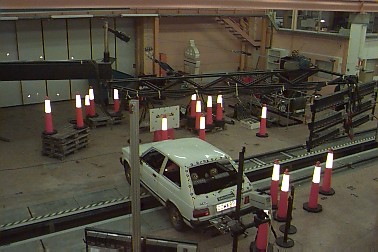
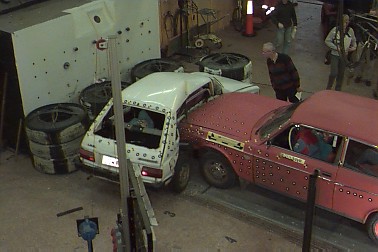
The red car is accelerated along the rails to 50 km/h, and crashes into
the side of white one, pushing it sideways by about 5 metres. The cars
are filmed by five cameras running at 1000 frames per second. The whole
crash lasts only 1/3 of a second.
Here are some images taken about 1/10 of a second into the crash. The
first two are from high speed rotating prism film cameras, the last is
from a high speed video camera. (The original images are actually much
bigger and in color).
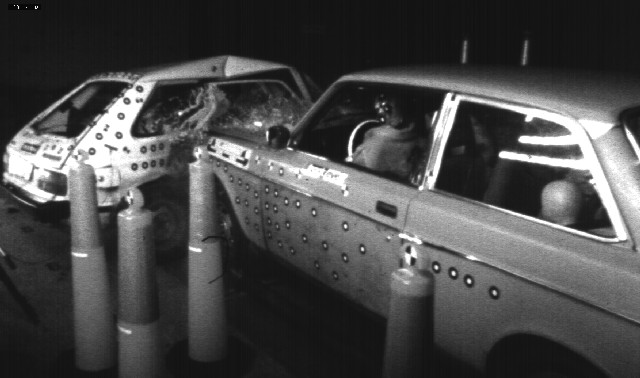
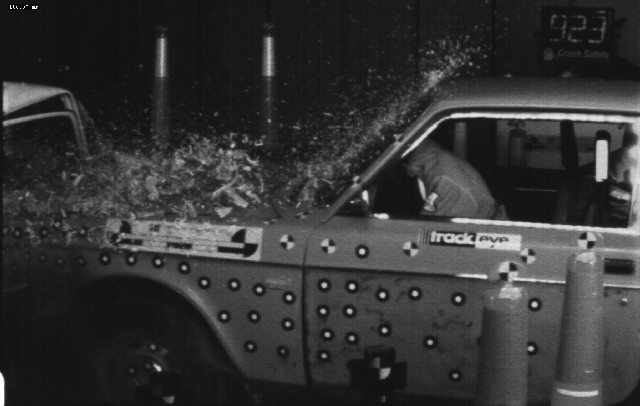
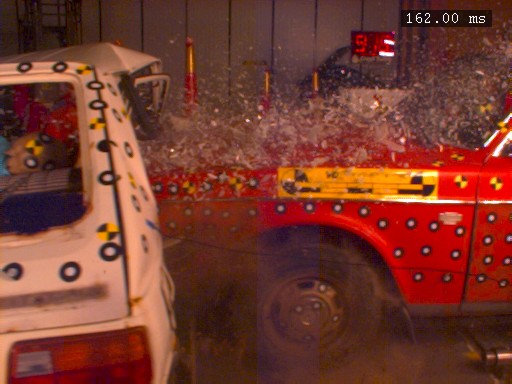
In CUMULI, we will automatically extract, track, and reconstruct the 3D
motion of the white circular markers, so that the motion and deformation
of the cars can be measured as the crash progresses. Practically, one
of the most difficult tasks is the calibration of the multi-camera
system. We will do as much of this as possible from the image data
itself - a process called autocalibration.
Car components and sub-assemblies are also tested, usually with the
parts mounted on some sort of test sled. These two MPEG sequences show the head
and neck of a test dummy with whiplash.






